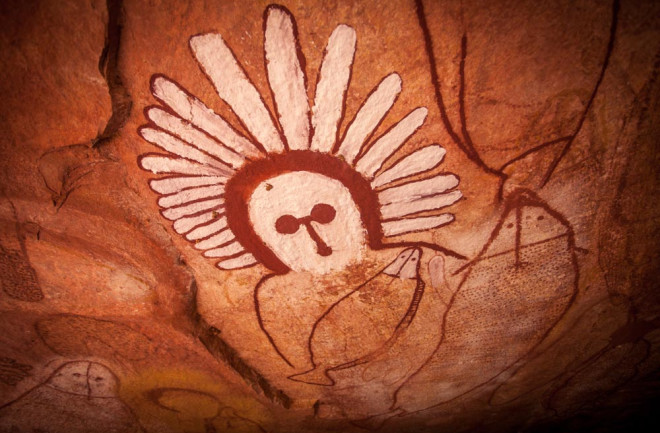Nothing stirred in the relentless midday heat. The gum trees appeared exhausted, nearly drained of life. The hunters crouched in the foliage, their long, sharp spears poised to unleash at a moment’s notice. The giant birds that were the objects of their attention strode slowly, elegantly, unsuspecting. Most of these creatures were about 7 feet tall. The meat from even one animal offered the tribe sustenance for an extended period of time — but the hunters knew that this reward could come at a price. The mihirung paringmal were known to deliver a vicious, and sometimes deadly, kick.
The Tjapwurung, an Aboriginal people in what is now southern Australia, shared the story of this bird hunt from generation to generation across an unbelievably large slice of time — many more millennia than one might think possible. The birds (most likely the species with the scientific name Genyornis newtoni) memorialized in this tale are now long extinct. Yet the story of the Tjapwurung’s “tradition respecting the existence” of these birds conveys how people pursued the giant animals. At the time of this particular hunt, between 5,000 and 10,000 years ago, volcanoes in the area were erupting, wrote amateur ethnographer James Dawson in his 1881 book Australian Aborigines, and so scientists have been able to corroborate this oral history by dating volcanic rocks.
The extraordinary antiquity of such stories, which represent knowledge passed on largely orally, was not demonstrable until recently. This has allowed the full extent and implications of the longevity of the memories on which these stories are based to be appreciated. Another such oral history surrounds the Klamath people of Oregon, in the western U.S., who tell of a time when there was no Crater Lake, only a giant volcano towering over the landscape where the lake is today. As the story goes, the fractious volcano god, besotted with a local beauty, threatened the Klamath with fury and fire unless the woman acquiesced. But her people called upon their protector — a rival deity — who fought the volcano god, eventually causing his mountain home to collapse in on him and fill with water. For the next approximately 7,600 years, the Klamath taught each new generation the importance of avoiding Crater Lake lest they disturb the evil god within. With remarkable precision, geologists have determined that this is the time of the terminal eruption of the former volcano, Mount Mazama, and the creation of the landscape that exists today. The Klamath were there all along, and their memories of that ancient cataclysmic event have passed into global knowledge today.

